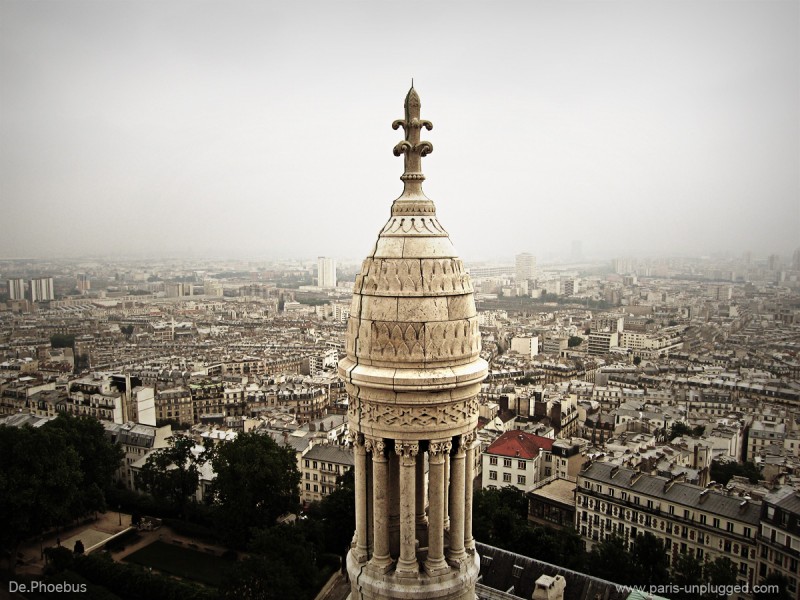 .
.du Second Empire. Dans un discours prononcé par Monseigneur Fournier le 4 septembre 1870, celui ci martela que la
l’ensemble soit achevé et consacré en 1919.
Le style du bâtiment s’inspire d’architecture Romane et Byzantine. Il suscitera de nombreuses polémique mais influencera un certain nombre dE constructions d’églises au XXe siècle.
The Basilica of the Sacred Heart also called the National Vow, originated after the 1870 war that brought the downfall of the Second Empire.
In a speech given by Bishop Fournier September 4, 1870, this one hammered the defeat of France was due to divine punishment following the moral laxity which stroke the country since 1789.
In January 1871, two notables decided to do everything possible to build a shrine to the Sacred Heart of Jesus Christ.
The place chosen was highly symbolic. If Montmartre housed various religions for centuries, it was the starting point of the events of the Commune who convulsed the city for three months, confirming the desire for expiation. Indeed, the period was unfortunately not stingy with destruction of churches and murdered priests.
The complex was funded by a national subscription bringing 46 million francs over half a century. An architectural competition was launched in 1873, won by Paul Abadie.
The first stone was laid in 1875. If the Nave was inaugurated in 1891, it was not until 1914 that the assembly is completed and dedicated in 1919.
The style of the building is inspired by Byzantine and Romanesque architecture. It will generate controversy but many will influence a number of church buildings in the twentieth century.
LOCALISER / LOCATE
 |
|
Paris XVIIIème arr.. La basilique du Sacré-Coeur pendant la construction du campanile, vers 1908. LL-6301
|
 |
|
Paris XVIIIème arr.. La basilique du Sacré-Coeur pendant la construction du campanile, vers 1908. LL-6302
|
 |
| © Albert Harlingue / Roger-Viollet |
 |
|
Montmartre, rue du Chevalier de la Barre, Paris (XVIIIème arr.).
Photographie d’Eugène Atget (1857-1927), 1899. Paris, musée Carnavalet.
|
 |
|
Paris XVIIIème arr., Montmartre.
Mise en place de la statue équestre de Saint Louis, par Hippolyte Lefebvre (né en 1863), devant la basilique du Sacré-Coeur. 1927. RV-624316
|









